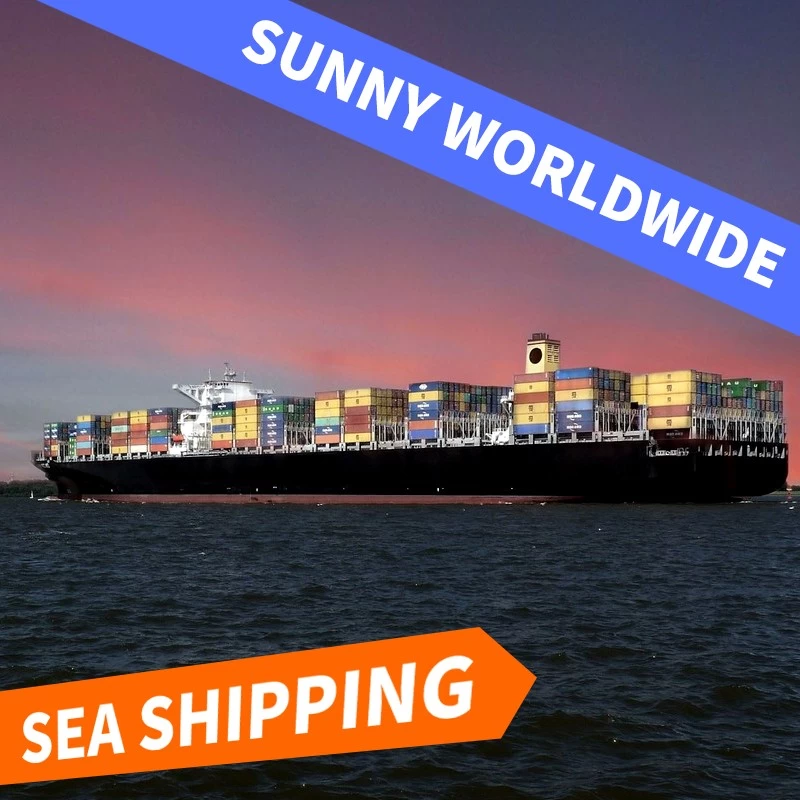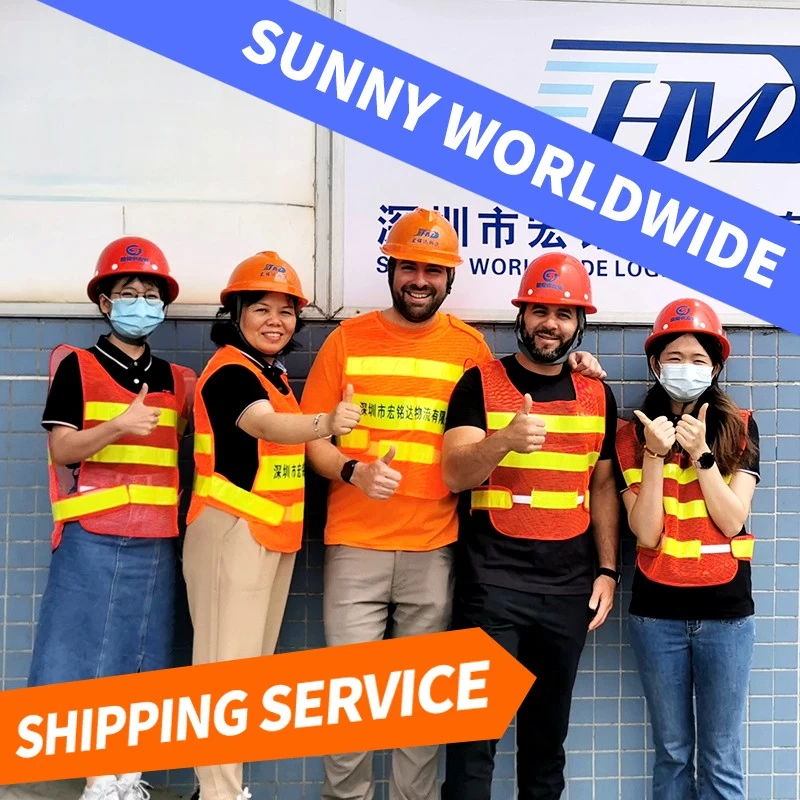GRI/PSS/EBS/THC/ORC/CIC/HLA... Do you understand all these surcharges for shipping?
Due to various reasons of the ship, cargo, port and other aspects, the ship increases expenses or suffers economic losses in the transportation of goods, the ship to compensate for these expenses or losses, in addition to the basic rate, the provision of Additional charges, called Surcharge or additional. There are many kinds of surcharges, and as some circumstances change, new surcharges will be eliminated or introduced. This article is to the existing more commonly used Marine surcharges slightly collated, hoping to help you better understand the Marine surcharges (lest be pit).

01 Comprehensive rate increase surcharge GRI
GRI stands for General Rate Increase. It is generally used by South American airlines and American airlines. Due to port, ship, fuel, cargo or other reasons, the shipping company's transportation costs have increased significantly, and the shipowner has added a comprehensive rate increase surcharge to compensate for these increased expenses.
02 Peak season surcharge PSS
The full name of PSS is Peak Season Surcharge. This cost is generally in the peak season when freight is relatively busy many shipping companies will take an excuse to charge, with China's "Spring Festival" price is somewhat similar. April to November of each year is generally the peak season for the world's freight.
03 Emergency fuel surcharge EBS
The full name is Emergency Bunker Surcharge, meaning emergency fuel surcharge. EBS is a surcharge on sea freight and is generally settled in US dollars like sea freight. In the case of FOB terms, this charge should be borne by the recipient, not the shipper, as EBS is not a FOB local charge. The fee can be paid on arrival or in advance.
EBS is generally a temporary surcharge imposed in order to make up for the rapidly rising costs when the international crude oil price is rising rapidly and the shipping company feels that it is more than its ability to bear, and it is not convenient to raise the sea freight in time due to the sluggish market.
04 Dock handling fee THC
THC stands for Terminal Handling Charge. It can be further divided into OTHC-Origin Terminal Handling Charge and DTHC-Destination Terminal Handling Charge.
05 Origin receiving fee ORC
The full name is Original Receiving Charge local receiving charge/origin receiving charge/origin receiving charge. This cost is more complicated, and it is different from and related to THC. ORC is only available in southern China, mainly in Guangdong ports, while THC is available in all ports (including Guangdong ports). ORC and THC only charge one or the other - if you receive ORC, you will not receive THC. If you receive THC, you will not receive ORC.
ORC is specially designed for shipping from ports in South China, and the destination ports are North America, Central and South America, Europe and North Africa and other ocean routes. Ports in South China to other destination ports, such as Southeast Asia, are the same as ports in other regions, only THC.
06 Port congestion surcharge PCS
The full name is Port Congestion Surcharge. When the port is crowded or particularly busy, the waiting time and shipping schedule of the ship will be extended, and the docking fees such as tug fees may also increase, which will cause a substantial increase in transportation costs, and the shipping company will charge the shipper a port congestion surcharge in order to make up for this cost loss.
07 Container imbalance surcharge CIC
The full name of CIC is Container Imbalance Charge, sometimes also known as Container Imbalance Surcharge. This charge is a surcharge imposed by the shipping company in order to cover the cost of moving empty containers due to the imbalance in the volume of trade or seasonal changes resulting in an imbalance in the flow of cargo and containers.
08 Delivery to destination fee DDC
The full name of DDC is Destination Delivery Charge. In terms of DDU, DDP, etc., this charge is borne by the seller/shipper; otherwise, it is paid by the buyer/consignee. For example, CIF terms - Buyer/receiver shall bear all costs and risks after the goods have crossed the ship's rail at the port of loading, so all costs including DDC at the port of destination shall be borne by Party/receiver.
09 Overweight surcharge HLA
HLA stands For Heavy-Lift Additiona, also known as Surcharge For Over Weight. Means that the weight of a single piece of cargo exceeds a certain standard (standards may vary between forwarders or shipowners), requires special equipment (such as heavy cranes) or special operations (such as the need for bedding, reinforcement materials and manual binding or reinforcement), is difficult to handle, or requires special handling in the stowing of the ship, A surcharge levied to cover increased operating costs.
Generally more than 2 tons, 3 tons or 5 tons is considered overweight. The excess surcharge is calculated according to the weight, the greater the weight, the higher the surcharge, if you want to transship, then each transshipment, the surcharge once.
10 Currency depreciation surcharge CAF
CAF stands for Currency Adjustment Factor. Also known as CAS-Currency Adjustment Surcharge. When the currency of the collection of freight is significantly depreciated, the shipping company will suffer great losses because of currency depreciation. In order to make up for the loss, the shipowner will pass the loss on to the shipper/cargo owner by adding a currency depreciation surcharge.
11 Extra long surcharge LLA
LLA stands For Long Length Additional, also known as Over Length Additional or Surcharge For Over Length. A surcharge charged to cover the increased operating costs of a single piece of cargo that exceeds a certain length (standards may vary between forwarders or shipowners), requires special equipment or special operations, is difficult to handle, or requires special handling on stowage. Generally, it is more than 9 meters even if it is too long, if it is a container cargo, it is generally more than 6 meters even if it is too long, and the rate increases according to the length.
12 Emergency cost surcharge ECRS
ECRS stands for Emergency Cost Recovery Surcharge, also known as "severe weather Operation surcharge" - when bad weather causes a significant increase in shipping and operating costs, and so on.
13 Container service charge CSC
CSC stands for Container Service Charge or container service Charge.
14 Fuel surcharge FAF
The full name is Fuel Adjustment Factor, which is generally used on Japan routes. This surcharge is somewhat similar to the temporary fuel surcharge above - essentially the same, but called differently.
15 Entry summary Declaration ENS
ENS (Entry Summary Declaration), short for "Entry Summary Declaration", refers to the European Customs Advance manifest rule. Since 1 January 2011, the EU has enforced the "advance declaration of manifest" rule for all cargo heading to (all goods imported into the EU) or passing through (all goods in transit, all goods in transit, all goods not unloaded on board, etc.) EU ports, which applies to all EU Member States.
16 Suez Canal surcharge SCS
SCS stands for Suez Canal Surcharge. The routes from Asia, Oceania, East Africa and other regions to Europe basically pass through the Suez Canal. When a ship passes through the Suez Canal, the shipping company needs to pay a certain navigation fee to the canal authority, which the shipowner collects from the customer in the form of Suez Canal surcharge.
17 Panama Canal Surcharge PTF
The full name of PTF is Panama Canal Transit Fee. In the same way as the Suez Canal surcharge, the route from the Far East and the west of the United States (referred to as the West of the United States) to the east of the United States (referred to as the East of the United States) generally passes through the Panama Canal, and the shipping company needs to pay a certain navigation fee to the canal authority when the ship passes the Panama Canal, which the shipowner collects from the customer through the Panama Canal surcharge.
18 Document fee DOC
DOC=Document. In the freight forwarding industry, there are two fees for DOC. One is DOC charged by the shipping company, which is fixed and charged in RMB. The other is the DOC charged by the port of destination, which is also one of the basic fees of the port of destination. The agent of the port of destination is charged in US dollars, and each agent charges different fees.
19 Automatic manifest system entry fee AMS
The name is Automatic Manifest System, automatic manifest system entry fee. For US-Canada routes, US-specific - All cargo to the United States or transiting through the United States to other countries or regions are subject to AMS declaration (24 hours before shipment). AMS is also known as the 24-hour Manifest System/United States Counterterrorism Manifest System.
20 Interim risk surcharge TAR
The full name is Temporary Additional Risks. This fee is somewhat inexplicable, in fact, it can be simply understood as a war surcharge, or think of it as another way of saying war surcharge.
21 Automatic manifest system entry fee ACI
The full name is Advance Commercial Information. Canadian Customs regulations, all goods to Canada or through Canada to other countries must be declared to the Canadian Customs 24 hours before loading, and AMS is very similar to the United States.
22 Comprehensive rate increase surcharge GRI
GRI stands for General Rate Increase. It is generally used by South American airlines and American airlines. Due to port, ship, fuel, cargo or other reasons, the shipping company's transportation costs have increased significantly, and the shipowner has added a comprehensive rate increase surcharge to compensate for these increased expenses.
23 Cleaning charge CC
The full name is Cleaning Charge, also known as cleaning labor charges, cleaning charges. This charge is usually more common when shipping bulk groceries.
24 Fuel surcharge
The BUNKER SURCHARGE OR BUNKER ADJUSTMENT FACTOR (B.A.F.) is imposed when fuel prices suddenly rise.
25 Transhipment surcharge
TRANSHIPMENT SURCHARGE: the surcharge charged by the ship when the goods shipped to non-base port need to be transshipped to the port of destination, including transhipment charge and second leg freight.
26 Direct surcharge:
DIRECT ADDITIONAL surcharge: A surcharge imposed when a certain amount of cargo is shipped to a non-base port and the shipping company can arrange a direct voyage to that port without transshipment.
27 Port surcharge:
PORT ADDITIONAL OR PORT SUECHARGE: A surcharge imposed by the shipping company in some ports due to poor equipment conditions or inefficient handling, among other reasons.
28 Optional port surcharge:
OPTIONAL SURCHARGE: The shipper can not determine the specific port of discharge, require in the two or more ports proposed in advance to choose one port of discharge, the ship added surcharge.
29 Diversion surcharge:
SURCHARGE: surcharge when the ship has to make a detour to transport the goods to the port of destination due to obstruction of the normal channel.
30 Change of port surcharge:
ALTERNATIONAL OF DESTINATION CHARGE: a surcharge imposed when the owner requests to change the original port of the cargo, with the permission of the relevant authorities (such as customs) and the consent of the ship.

Sunny Worldwide Logistics (Shenzhen) Limited - established in 1998,an international freight forwarder in China.Sunny Worldwide Logistics proven and reliable shipping solution, offering consistent, high-quality service worldwide for any kind of freight.our company is a large and professional logistics company,we provide the sea, land, air transport, customs clearance, inspection and trailer, Co, F/A, fumigation, insurance and other related itmes in one service.The spirit of service of our business is Professionalism Focus High Efficiency.we are responsible for each and every step of the shippment.